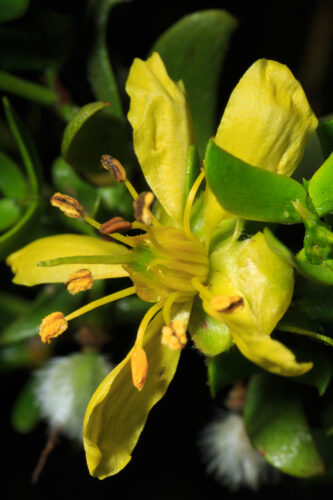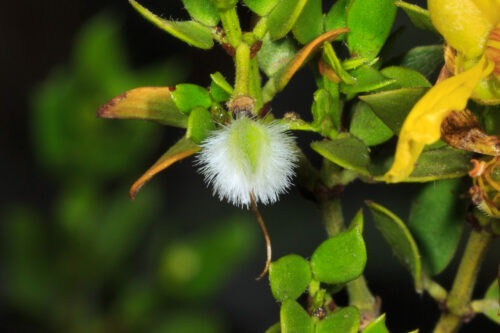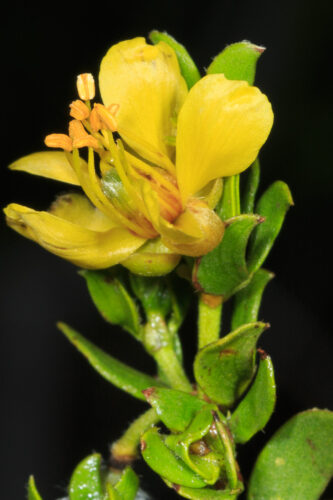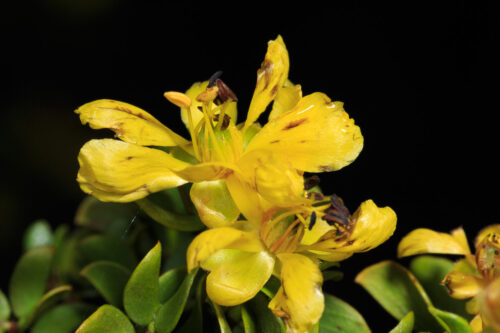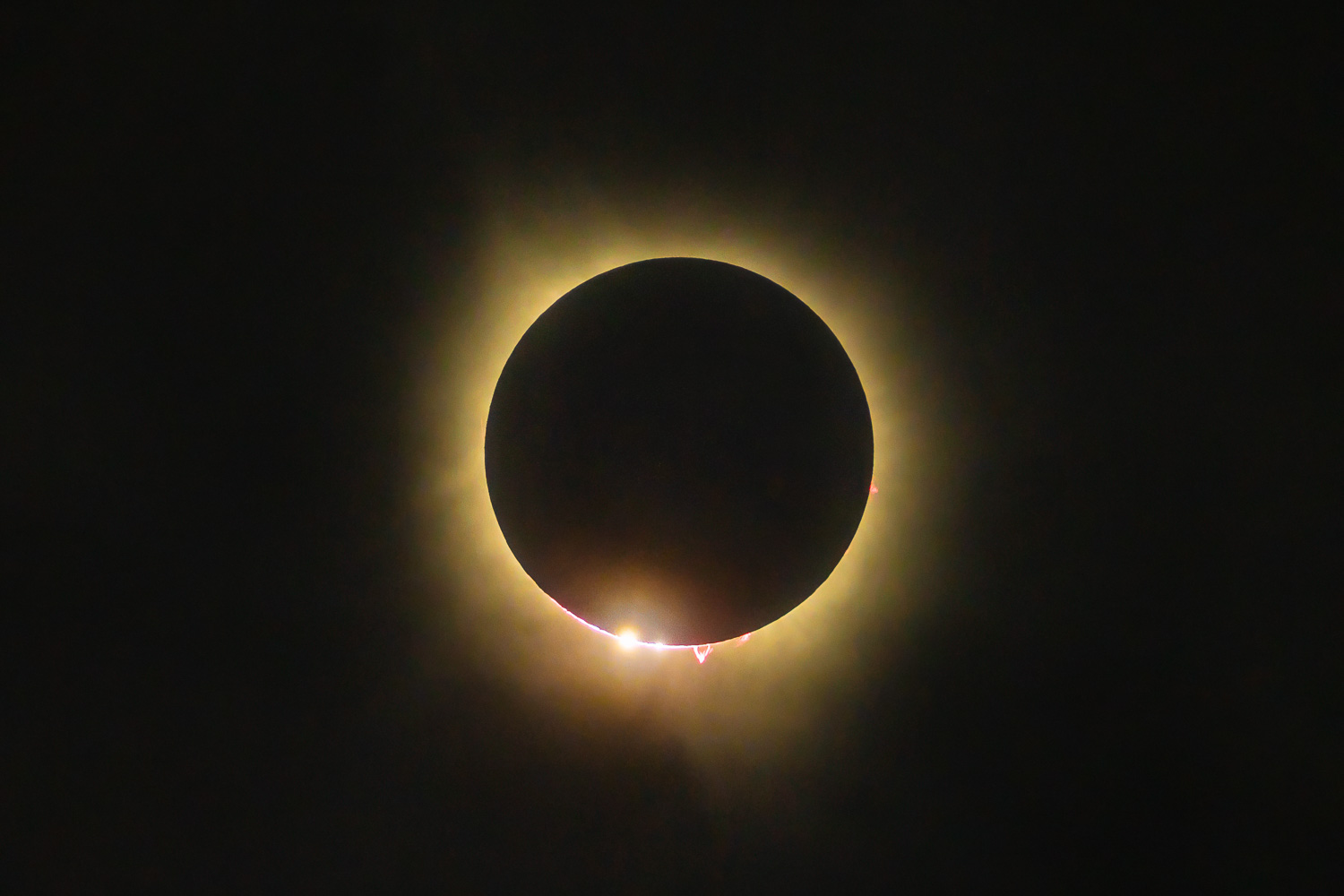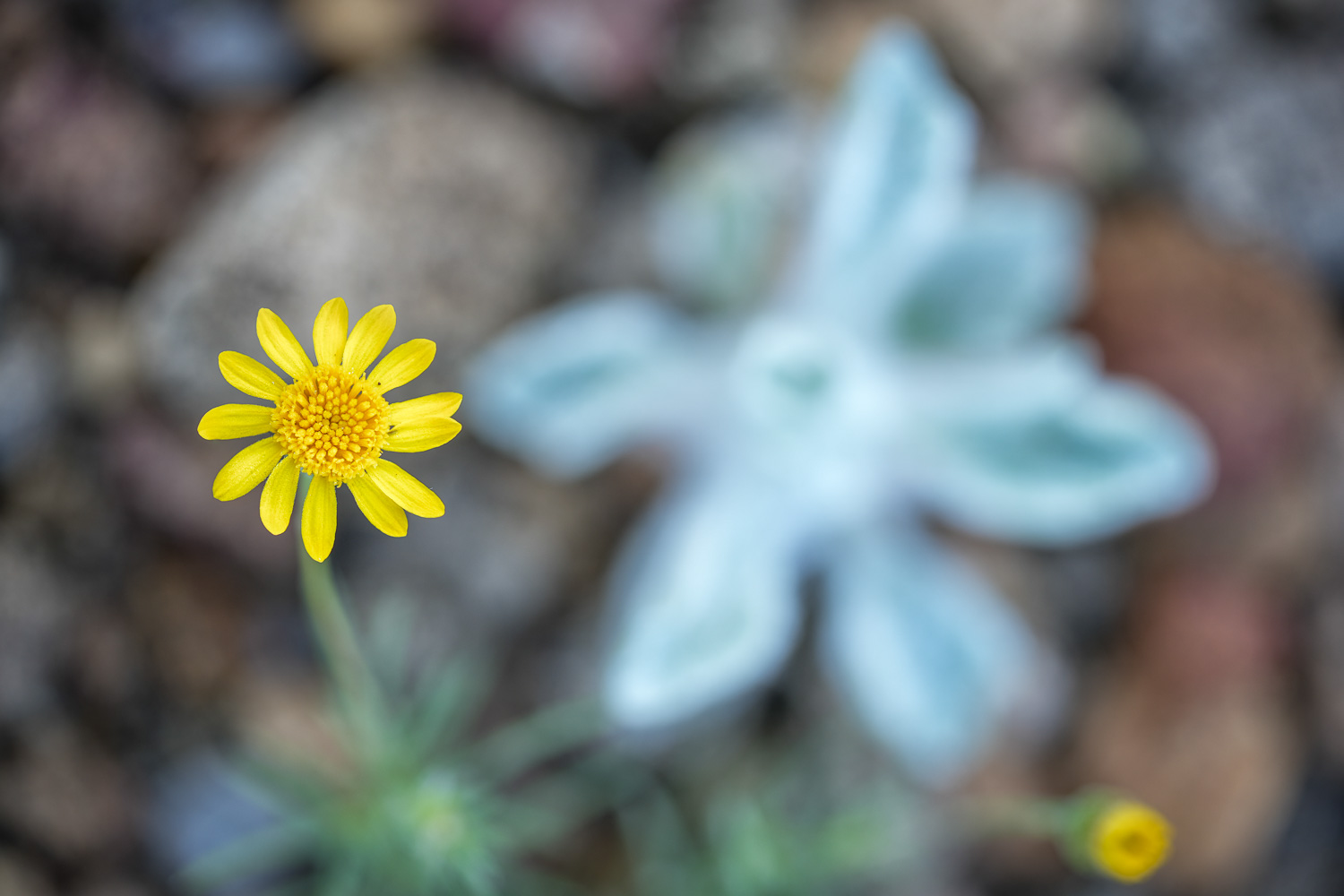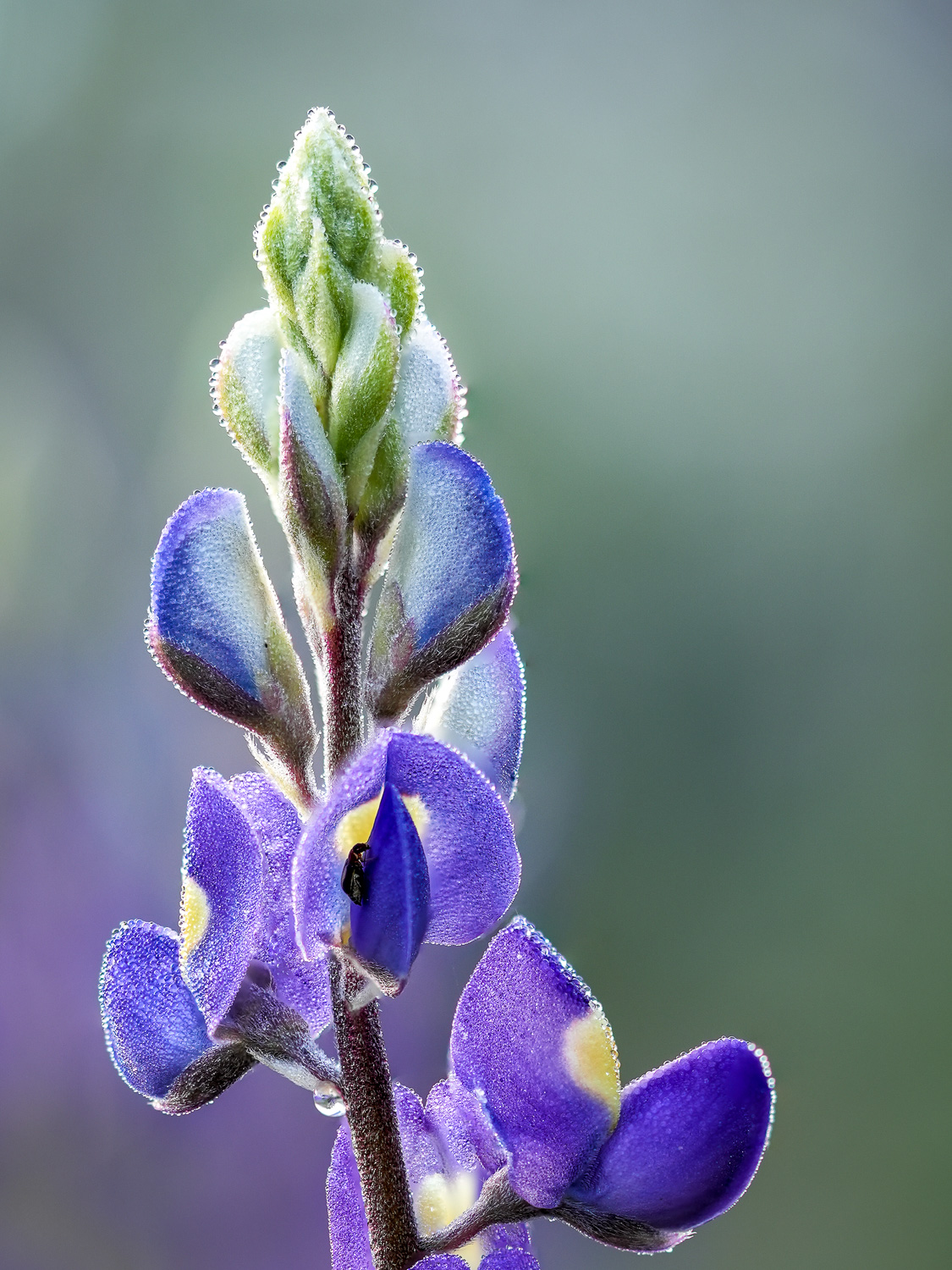Creosote Bush (Larrea tridentata)
Description: Creosote-bush is a 3-5 ft., evergreen shrub which can reach 10 ft. and has numerous flexible stems usually arising from the base at an angle. Its slender, irregularly branching stems bear tiny, rich-green, aromatic leaflets. The small, compound leaves, 1/5–2/5 inch long, are composed of 2 leaflets. They are opposite, united at the base, pointed at the tip, dark to yellowish-green, strong-scented, and often sticky with resin. These provide a background for small but prolific, yellow, velvety flowers, followed by fluffy, white fruit. The flowers are inconspicuous except under favorable conditions, when they are prominent, giving the bush a yellowish cast. They are 1/4–1/2 inch long, with 5 petals, 10 stamens, and 1 pistil. Stems are gray with dark nodes, giving a jointed appearance.
Creosote Bush is the most characteristic species of the hot deserts of North America. Its pungency fills the air following rains. Decoctions from its leaves are used as antiseptics and emetics. Many “bunches” of plants are actually clones. The foliage hides species of grasshoppers, praying mantids, and crickets that occur only on this plant. Leafy galls caused by a fly, the Creosote Gall Midge (Asphondylia spp.) are often numerous.
Family: Zygophyllaceae
Synonym(s):
USDA Symbol: LATR2
Duration: Perennial
Habit: Shrub
Size Class: 3-6 ft.
Bloom Color: Yellow
Bloom Time: May, Jun, Jul, Aug, Sep
Water Use: Low
Light Requirements: Sun
Soil Moisture: Dry
Bloom Notes: Drought-tolerant creosote bush is the dominant shrub in desert areas, covering thousands of square miles. It may not be a distinct species of L. divaricata. The shrub can be sheared like boxwood, pick-pruned to a small, graceful shrub, or pruned to make a small tree. Tip pruning increases density. Nothing will grow under creosote bush because of the toxins it gives off. Leaves are sticky with a creosote resin. Produces a refreshing scent after rain. The main bloom period is in the spring, but blossoms will occur later depending on available moisture.
Missing Images: Plant, Leaf, Fruit-Seed
Data Completeness: Complete
ATTRIBUTION: All of the Texas Wildflower images in this post are copyrighted and are the exclusive property of Terry B. Kahler. Reproduction without explicit written consent is prohibited. Some of the information contained in this section was taken from the Lady Bird Johnson Wildflower Center website and is being used under their terms of use. Redistribution from this site is prohibited. Additional information contained in this section was taken from the USDA website including the USDA code.
